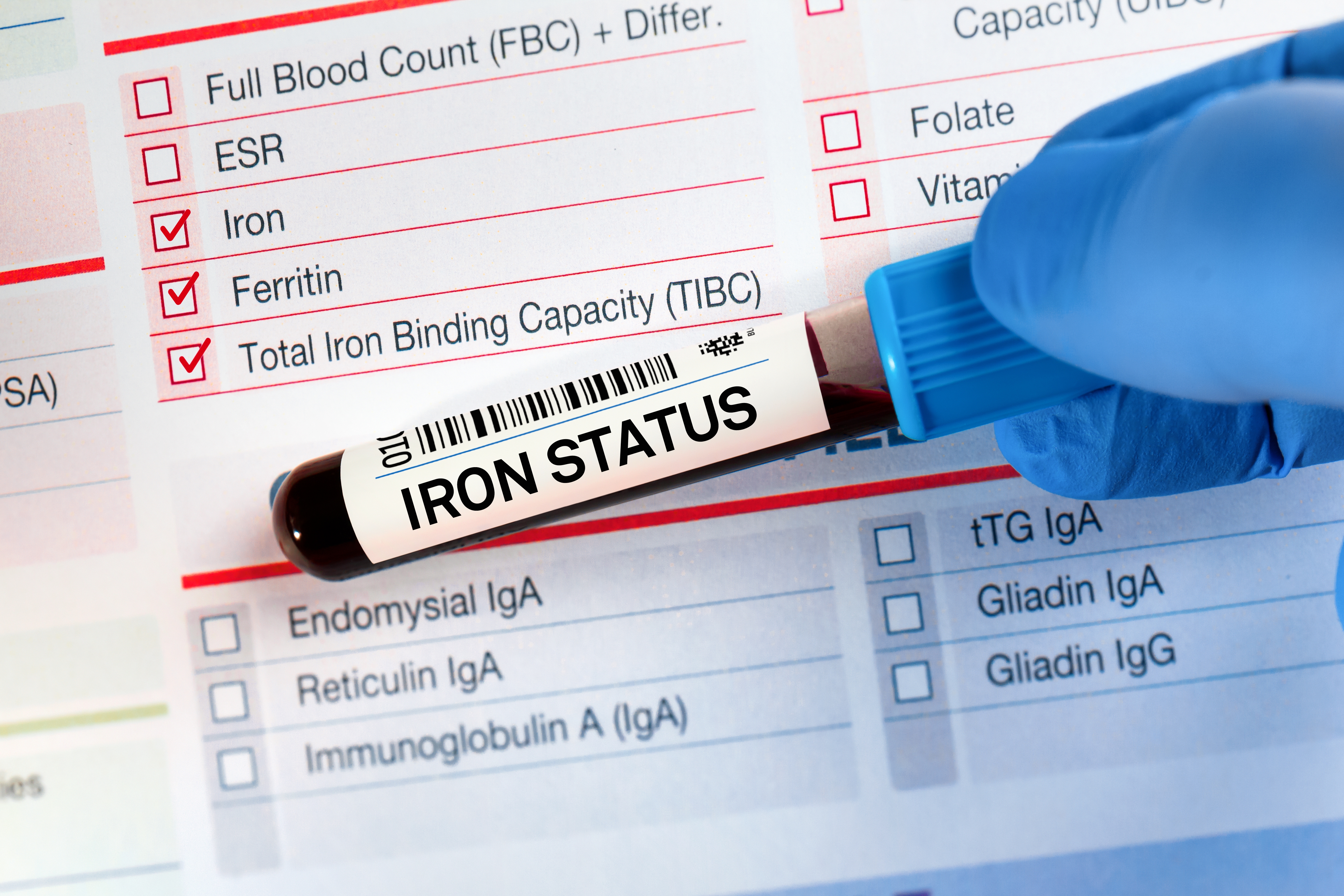Do you have low ferritin levels?
Have you gone to your health care provider with concerns of fatigue, brittle nails, headaches, dizziness or shortness of breath?
Did your provider dismiss your concerns because your symptoms were vague and could be attributed to any number of things? Did you walk away feeling unheard? (We hate when this happens!)
Perhaps as an athlete these symptoms are starting to get in the way of your workouts, or just get in your head, because you’re not sure what the heck is going on in your body.
Maybe you have a coach who is telling you that you must have low iron because “all athletes get low iron.” And, they’re recommending you just take a supplement without any testing or real medical advice. (Sadly, we’ve seen this and we also hate it when this happens!)
Maybe you feel perfectly fine and had some routine blood work done, or got one of those at home health tests, only to find out that you have low iron levels. Now you have no idea what that even means for you.
In any of these scenarios, if the medical provider isn’t digging deeper to find out the underlying reasons behind why your ferritin levels are low and seeking to find the best way to support your body, this blog is for you!
Both micronutrients AND macronutrients are important.
We recently hosted a Masterclass about macro tracking (if you missed it, and you’re curious, catch the replay here!). But the reality is, as important as macros are, the focus on them often leaves out micronutrients and minerals.
It’s important to think about your micros, too. That’s because many of the processes in our body rely on getting micronutrients and minerals from the foods we consume- including the production of energy, which is very micronutrient dependent.
If you’ve ever sat through a science class and thought “I’ll never use the Kreb’s cycle again, I have no reason to learn this”… unfortunately, Mrs. High School Science teacher was onto something!!
We’re gonna dive into the science for just a second, because understanding some of the pathways that our bodies use to create energy also drive our iron transport.
And, to understand the iron pathway, we need to understand some other pathways which result in the production of usable energy in the form of adenosine triphosphate (ATP).

Our mitochondria are often called the powerhouse of the cells. Those mitochondria need copper to create ADP (adenosine diphosphate), which is the energetic precursor to ATP (AKA – ENERGY!).
In order to create ATP, we need magnesium. So, to create energy, copper and magnesium must be available for the body to produce adequate energy.
Low copper and magnesium means low energy production.
So, what does all of this have to do with low ferritin levels or low serum iron?
First, let’s define the difference between iron and ferritin.
Though often used interchangeably, serum iron is a measure of how much iron is in your blood. In contrast, ferritin is a measure of iron that is bound to transport proteins.
If you’re interested in learning more about iron for athletes, we have another blog post here.
Our bodies need about 25 mg of iron a day and we recycle about 24 mg of iron. So essentially, we lose approximately 1-2 mg of iron a day.
So, if we eat a diet that has plenty of iron, and we are recycling the vast majority of our iron, how do we end up with low iron?
Put simply, we need those micronutrients we spoke about above in order to move iron from the tissues into the bloodstream, as well as to facilitate storage.
The body must have enough copper to regulate iron metabolism- if there isn’t enough bioavailable copper to transport iron out of the tissues and bind it to ferritin, it can become stuck in the tissues.
Then, it will NOT show up in your lab work and will have you feeling anemic even though you have adequate iron in your tissues, because you aren’t able to get it into circulation and utilize it.
This is where our scenarios from the start of the blog come into play … you feel like crap because your serum iron is low, or your ferritin is low, meaning that you can’t utilize the iron you have in your body.
So, you go see someone who throws you on an iron supplement without addressing those micronutrient deficiencies which are absolutely required to make the iron transport process function to turn into energy.
So, you still feel like crap, even though you’re taking on more iron (that you still can’t use!). This can create a situation where you have high levels of iron, which can cause similar symptoms to low iron.
What should you do now that you know more about iron and ferritin?
We’re by NO MEANS saying ignore your provider’s advice. It’s just that most physicians don’t dive into the minutia of metabolic flow, and low serum iron levels or low ferritin levels which do require some intervention.
But, just blindly consuming iron supplements long term is not an appropriate solution, and may in fact worsen the issue.
Instead, we recommend digging deeper into the issue. So here’s are the steps you should take next:
1. Find a trusted provider: We suggest seeking out a partner in health care who does understand the pathways to support maximizing your energy production, increasing your bioavailable micronutrients, and working to heal your gut. This also plays a big role in optimal ferritin levels & inflammation management.
You know that around here, we are always about getting your nutrients through food first, and this is no exception.
2. Eat your micronutrients: The ideal way to consume those important micronutrients to support iron metabolism is to eat a diet rich in foods containing these micros.
Copper: This is found in beef, oysters, potatoes, mushrooms, dark chocolate and chickpeas.
Magnesium: This is often under-consumed in our diets, can be found in nuts, seeds, dark leafy greens, legumes, whole grains, fish and dark chocolate.
Vitamin A: This can be found in beef liver, grass fed butter, and cod liver oil in order to support copper utilization and iron mobilization. For some, supplements may be necessary.
But, always get lab testing first and speak with a professional who understands this complex process and can direct you appropriately.
The topic of ferritin/iron is certainly a complex one, and can feel overwhelming.
Our goal is to simply remind you that you can’t look at one issue (or one micronutrient) in a vacuum. Rather, ,you have to look at something like iron/ferritin from a whole body perspective.
We encourage you to seek knowledge and support from practitioners that are willing to dig deep and get to the root of your symptoms without slapping a supplement Band-Aid on a multifactorial issue.
If you would like support in increasing your ferritin levels, reach out & apply for 1:1 coaching.






